
Charles XI or Carl was King of Sweden from 1660 until his death, in a period of Swedish history known as the Swedish Empire (1611–1721).
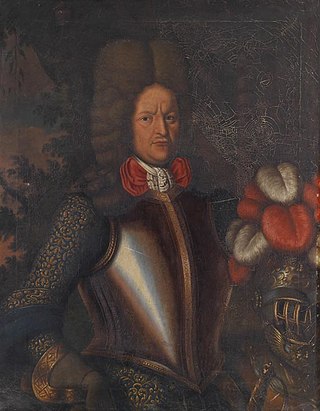
Johann Reinhold Patkul was a Livonian nobleman, politician and agitator of Baltic German extraction. Born as a subject to the Swedish Crown, he protested against the manner of King Charles XI of Sweden's reduction in Livonia, enraging the king, who had him arrested and sentenced to mutilation and death (1694). Patkul fled from the Swedish Empire to continental Europe, and played a key role in the secret diplomacy (1698-1699) allying Peter I of Russia, Augustus II the Strong of Saxony and the Poland–Lithuania - as well as Christian V and his successor Frederick IV of Denmark–Norway - against Charles XII of Sweden, triggering the Great Northern War of 1700-1721. Patkul was close friends with the Danish Privy Councillor Knud Thott who had been driven away from his home province Scania during the Scanian War. During the 1690s and early 1700s the two of them worked actively for Danish intervention against Sweden so that Livonia and Scania might be freed from Swedish overlordship. During the first war years, Patkul retained a key role in the communication between the allies and other European courts, holding positions at king Augustus's court first in Augustus's interests (1698-1700), then in tsar Peter's service. In late 1705 Patkul fell from Augustus's favor and was arrested and charged with high treason. Throughout the following year he was detained first in Sonnenstein, then in Königstein, before Charles XII forced Augustus to extradite him by the Treaty of Altranstädt in late 1706. Patkul spent another year in Swedish detention before Charles XII had him broken on the wheel and decapitated.

The Swedish nobility has historically been a legally and/or socially privileged class in Sweden, and part of the so-called frälse. The archaic term for nobility, frälse, also included the clergy, a classification defined by tax exemptions and representation in the diet. Today the nobility does not maintain its former legal privileges although family names, titles and coats of arms are still protected. The Swedish nobility consists of both "introduced" and "unintroduced" nobility, where the latter has not been formally "introduced" at the House of Nobility (Riddarhuset). The House of Nobility still maintains a fee for male members over the age of 18 for upkeep on pertinent buildings in Stockholm.

The Duchy of Courland and Semigallia was a duchy in the Baltic region, then known as Livonia, that existed from 1561 to 1569 as a nominally vassal state of the Grand Duchy of Lithuania and subsequently made part of the Crown of the Polish Kingdom from 1569 to 1726 and incorporated into the Polish–Lithuanian Commonwealth in 1726. On March 28, 1795, it was annexed by the Russian Empire in the Third Partition of Poland.

Baltic German nobility was a privileged social class in the territories of today's Estonia and Latvia. It existed continuously since the Northern Crusades and the medieval foundation of Terra Mariana. Most of the nobility were Baltic Germans, but with the changing political landscape over the centuries, Polish, Swedish and Russian families also became part of the nobility, just as Baltic German families re-settled in locations such as the Swedish and Russian Empires. The nobility of Lithuania is for historical, social and ethnic reasons separated from the German-dominated nobility of Estonia and Latvia.

David Klöcker Ehrenstrahl was a Swedish nobleman and portrait painter.
Anders Eriksson Hästehufvud was a Swedish civil servant and officer who served as Governor of the Duchy of Estonia between 1617 and 1619 and Governor-General of Swedish Livonia in 1628.
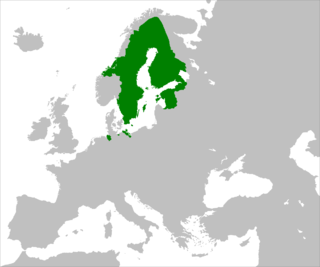
The Swedish Empire was the period in Swedish history spanning much of the 17th and early 18th centuries during which Sweden became a European great power that exercised territorial control over much of the Baltic region. The beginning of the period is usually taken as the reign of Gustavus Adolphus, who ascended the throne in 1611, and its end as the loss of territories in 1721 following the Great Northern War.
Otto Arnold von Paykull was a Livonian officer in the service of the Electorate of Saxony.
The Lord High Admiral or Admiral of the Realm was a prominent and influential office in Sweden, from c. 1571 until 1676, excluding periods when the office was out of use. The office holder was a member of the Swedish Privy Council and the head of the navy and Admiralty of Sweden. From 1634, the Lord High Admiral was one of five Great Officers of the Realm.

With the Capitulation of Estonia and Livonia in 1710 the Swedish dominions Estonia and Livonia were integrated into the Russian Empire following their conquest during the Great Northern War. The Livonian nobility and the city of Riga capitulated on 4 July (O.S.) / 15 July 1710 (N.S.), Pernau (Pärnu) in August, and the Estonian nobility and the city of Reval (Tallinn) on 29 September (O.S.) / 10 October (N.S.). Russia left the local institutions in place and confirmed the traditional privileges of the German nobles and burghers as was established in Privilegium Sigismundi Augusti, especially with respect to the Protestant faith. The land reform of the so-called reduction which had been introduced by the Swedish king Charles XI, and transformed many serfs to subjects of the Crown, was reversed.
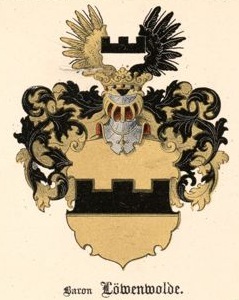
Gerhard Johann von Löwenwolde was a Baltic German Estonian knight. In the 1690s, he announced support of Johann Reinhold von Patkul's lobbyism against Swedish absolutist threats to Baltic noble privileges, while also working with the Swedish authorities in Estonia. He served in the Swedish army, and in 1697 was promoted major of the Swedish garrison in Riga. During the Great Northern War, he first served Augustus the Strong of Saxe-Poland–Lithuania, and after taking an ambiguous stance towards August and Peter the Great of Russia entered Peter's service after the Capitulation of Estonia and Livonia in 1710. He served as Peter the Great's plenipotentiary of Livonia during the same year, and held that office until 1713, when he became hofmeister in the service of Princess Charlotte of Brunswick-Wolfenbüttel, wife of Peter's son Alexei Petrovich, Tsarevich of Russia.
The uniformity policy was the concept of implementing Swedish law to the dominions of Sweden during the latter's time as an empire. It is symbolized by the slogan unus rex, una lex et grex unus possibly coined by Johan Skytte, governor-general in Swedish Estonia, Ingria and Livonia. However, the phrase is also found in the debates on the possible union of Scotland and England in 1607, when Sir Edwyn Sandys noted King James VI & I's view that for a perfect union there should be unus rex, unus grex, una lex.
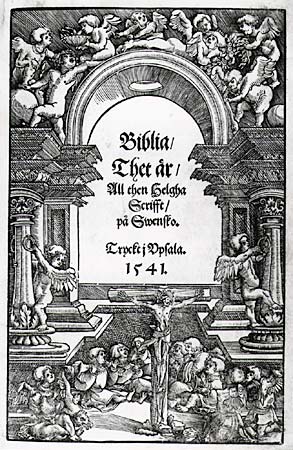
The Reformation in Sweden is generally regarded as having begun in 1527 during the reign of King Gustav I of Sweden, but the process was slow and did not end definitively until the Uppsala Synod of 1593 and the following War against Sigismund, with an attempted counter-reformation during the reign of John III (1568–1592).

Count Magnus Gabriel De la Gardie was a Swedish statesman and military man. He became a member of the Swedish Privy Council in 1647 and came to be the holder of three of the five offices counted as the Great Officers of the Realm, namely Lord High Treasurer, Lord High Chancellor and Lord High Steward. He also served as Governor-General in the Swedish dominion of Livonia.
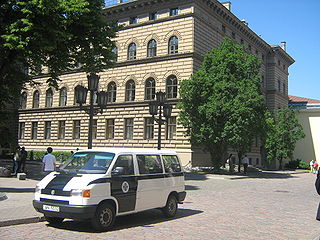
The Livonian Knighthood was a fiefdom that existed in Livonia. It was formed in 1561 by Baltic German nobles and disbanded in 1917 in Estonia, and in 1920 in Latvia. Like other Baltic knighthoods, the Livonian also had semi-autonomous privileged status in the Russian Empire.

(Les) Anecdotes de Suède is a political satire written against the Swedish regime of the 1680s. Probably dating to the end of that decade, it was first published in French, in two volumes, in 1716, under the full title Les anecdotes de Suede, ou Histoire secrette des changemens arrivés dans ce royaume, sous le regne de Charles XI. It subsequently appeared in German, English, and finally Swedish translations. Various men have been suggested to be the author, including the German jurist Samuel von Pufendorf (1632–1694), whose name was on the German edition, but the issue remains unsettled. It is one of the most controversial historical representations of the Swedish Empire, railing against the Great Reduction of 1680 in Sweden and especially sharply against Johan Gyllenstierna.

Estonia under Swedish rule (1561–1710) signifies the period of time when large parts of the country, and after 1645, entire present-day Estonia, were under Swedish rule. In the wake of the breakup of the State of the Teutonic Order, the Baltic German local nobility in the areas of Harrien (Harjumaa) and Wierland (Virumaa), as well as the city of Reval (Tallinn) in June 1561 asked for and were granted protection by the Swedish king Eric XIV, leading to Swedish involvement in the Livonian War. At the conclusion of hostilities in 1583, Sweden was in control of the northern parts of modern Estonia and Dagö ; the Duchy of Estonia was created from this territory. Following renewed wars between Poland and Sweden, the southern parts of present-day Estonia were incorporated into Sweden by the Treaty of Altmark in 1629. Sweden also conquered the island of Ösel (Saaremaa) from Denmark, and were thus in control of all of present-day Estonia.
The Reduction of Gustav I of Sweden, was an important reform during the Protestant Swedish Reformation, in which king Gustav I of Sweden ordered a reduction in church property and the return of land to the crown, making the national church dependent upon the monarch and effectively ending Swedish monastic life. This organised confiscation and transfer of the property of the Swedish Catholic church to the Crown – initiated at the Västerås riksdag of 1527 and finalised in the 1540s – was the economic phase of the Swedish Reformation and was followed by the Örebro Synod, which dealt with theological matters.
Livonian Peasants' Laws were laws introduced in the 19th century for Governorate of Livonia of the Russian Empire. About the same time similar laws has been enacted in all Baltic governorates and Duchy of Courland and Semigallia. These laws changed and clarified peasants rights and obligations, who ethnically were mainly Estonians and Latvians. This development culminated in Peasant Community Code of 1866 which codified peasants self-governance.













